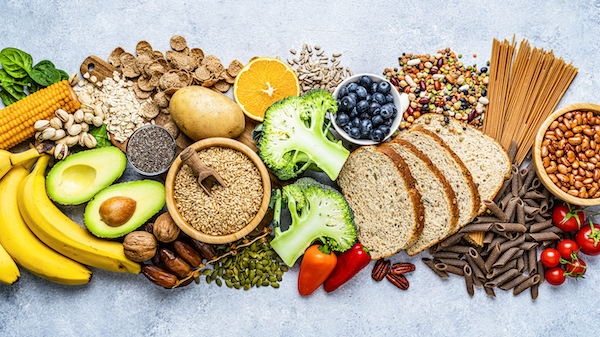Reviewed by Dr. Amber Hayden, DO
Glucose is a simple sugar that provides much of the energy our bodies use. In fact, glucose is the primary fuel for all life on planet Earth! Each cell in the body runs on glucose, and when it isn’t metabolized properly, the body suffers. Most practitioners test blood glucose as a part of a normal physical and during pregnancy. You may also need a blood glucose test if you have symptoms of hypoglycemia (low blood sugar) or hyperglycemia (high blood sugar). Diabetics test blood sugar at least once per day.

Insulin is the hormone released from your pancreas that essentially “opens” your cell doors for glucose. Without insulin, glucose stays in the blood and cannot fuel the cells. When a diet is high in refined carbohydrates and low in micronutrients, the pancreas works overtime to produce enough insulin to let all the sugar into your cells. After a while, your cells see so much insulin that they begin to resist it, so both insulin and glucose are at high levels in your blood. If more time goes by under these circumstances, the pancreas will eventually stop producing insulin. From a functional medicine perspective, once your cells become insulin resistant, you are under the umbrella of metabolic syndrome. And this faulty cell signaling will lead to high triglycerides, high cholesterol, and high blood pressure — and a whole cascade of additional health problems.
The best way to picture type 2 diabetes and insulin resistance is on a continuum, where there are many opportunities to step in and make changes for the better. For example, with a woman whose blood sugar test result is 90 mg/dL the first year, 91 the second, 92 the third and so on, it can be helpful for her to talk with her practitioner about where those numbers — though not yet in the diabetic range — are headed. This woman is probably already insulin resistant. Often conventional medicine practitioners will not say a thing to the patient until her numbers are getting closer to 98 or 99, and this is very close to pre-diabetes. The goal is to start making diet and lifestyle changes early on, before the trend takes us to diabetes.
Keep in mind that looking at trends in your blood glucose levels is much more helpful than simply viewing one number in isolation.
Normal fasting glucose: 70–99 mg/dL
Impaired fasting glucose (pre-diabetes): 100–125 mg/dL
Diabetes: 126 mg/dL and above on more than one occasion
Something to be mindful of is that many practitioners don’t test for insulin, and increased blood insulin (greater than 30-35 McU/mL two hours after a high-sugar meal) is one of the first signs that there’s a problem.
If blood glucose is elevated, a hemoglobin A1C, will give an overall sense of where blood sugar levels have been over the past three months. If the two-hour insulin is high but glucose is still under control, the woman can start with dietary changes because it’s still early enough to make a big difference — before glucose ever becomes too high.
Keep in mind that your healthcare provider will not be making decisions based exclusively on your test results but will evaluate your test results in context along with your medical history and family history. Each practitioner is different in her approach, so talk with yours about the best direction for your unique circumstances. If you’re concerned about insulin resistance, don’t be afraid to ask your practitioner for an insulin test. And certainly if your blood glucose levels are going up each year, you can take steps to prevent type 2 diabetes. We have lots of helpful information available in our articles on insulin resistance.










